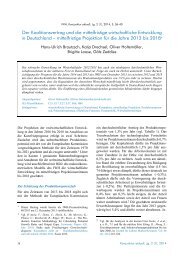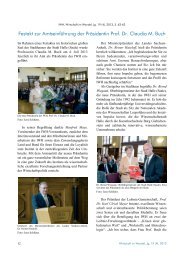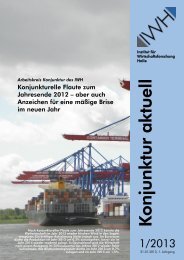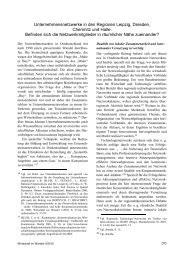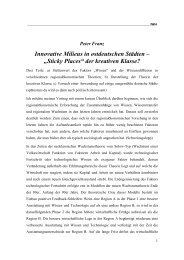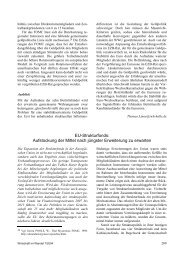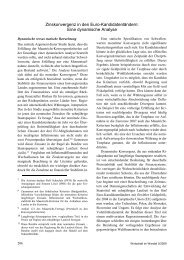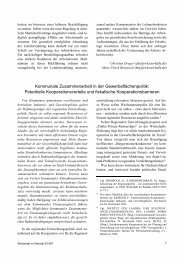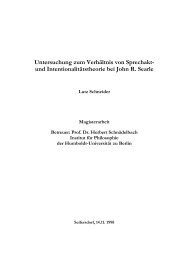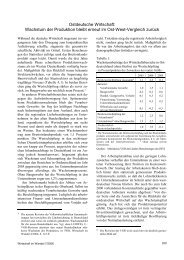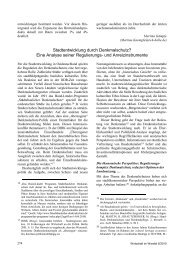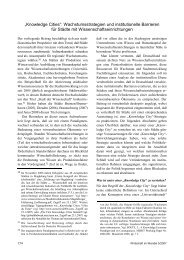Holger Zemanek: Bitte in dem anderne Paper die Anmerkungen von ...
Holger Zemanek: Bitte in dem anderne Paper die Anmerkungen von ...
Holger Zemanek: Bitte in dem anderne Paper die Anmerkungen von ...
Create successful ePaper yourself
Turn your PDF publications into a flip-book with our unique Google optimized e-Paper software.
3. Changes <strong>in</strong> <strong>in</strong>ternational competitiveness and cyclical fluctuations due to<br />
capital flows<br />
Balassa (1964) and Samuelson (1964) assumed that productivity growth <strong>in</strong> the economic<br />
catch-up is a gradual process without changes <strong>in</strong> the current account position. Productivity<br />
<strong>in</strong>creases <strong>in</strong> the <strong>in</strong>dustrial sector are balanced by relative price changes leav<strong>in</strong>g<br />
competitiveness unchanged. Nevertheless it has been observed that the current account<br />
positions of emerg<strong>in</strong>g market economies have deteriorated or fluctuated dur<strong>in</strong>g the economic<br />
catch-up process. As recently <strong>in</strong> Central and Eastern Europe, high current account deficits<br />
have been perceived as an <strong>in</strong>dication for eroded competitiveness, economic turmoil, and crisis.<br />
In the follow<strong>in</strong>g, changes <strong>in</strong> <strong>in</strong>ternational competitiveness are def<strong>in</strong>ed as wage <strong>in</strong>creases<br />
higher than productivity <strong>in</strong>creases and are l<strong>in</strong>ked to ris<strong>in</strong>g current account deficits and cyclical<br />
fluctuations <strong>in</strong> <strong>in</strong>ternational capital <strong>in</strong>flows.<br />
3.1. Changes <strong>in</strong> <strong>in</strong>ternational competitiveness<br />
L<strong>in</strong>dbeck (1979) l<strong>in</strong>ked the domestically driven wage barga<strong>in</strong><strong>in</strong>g process of Balassa (1964)<br />
and Samuelson (1964) to <strong>in</strong>ternational goods markets. He assumed <strong>in</strong> l<strong>in</strong>e with equation (1)<br />
that trade unions <strong>in</strong> the traded goods sector of countries <strong>in</strong> the economic catch-up process do<br />
not negotiate wage <strong>in</strong>creases higher than productivity <strong>in</strong>creases and world market <strong>in</strong>flation.<br />
By do<strong>in</strong>g this they help to ma<strong>in</strong>ta<strong>in</strong> the competitiveness of the domestic export <strong>in</strong>dustry (and<br />
therefore prevent ris<strong>in</strong>g unemployment). In contrast, <strong>in</strong> emerg<strong>in</strong>g markets with buoyant<br />
capital <strong>in</strong>flows wages may rise above domestic productivity <strong>in</strong>creases.<br />
Y<br />
W<br />
i i<br />
i cap<br />
( 1−<br />
γ ) i<br />
Lcap<br />
<<br />
cap<br />
i<br />
Pcap<br />
(11)<br />
If nom<strong>in</strong>al wages <strong>in</strong> the traded and non-traded sectors are assumed to be equal due to perfect<br />
labor mobility between sectors this yields:<br />
Q P<br />
c < (12)<br />
Q P<br />
T<br />
cap<br />
NT<br />
cap<br />
NT<br />
cap<br />
T<br />
cap<br />
In equation (12) as outl<strong>in</strong>ed above the direction of causality may have changed compared to<br />
- 10 -



